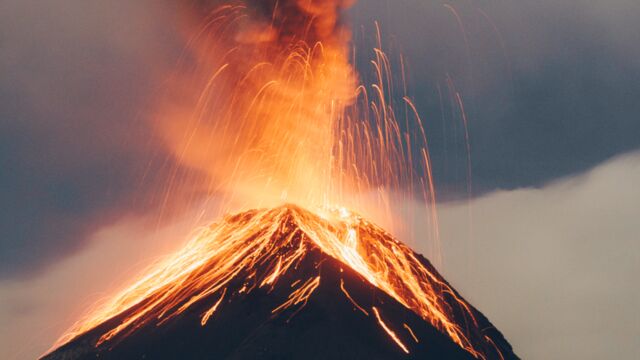Loudness is measured in decibels (dB), with the typical conversation being about 60 dB. Exposure to sounds above 85 dB is dangerous to the ear, with 120 dB being extremely painful and 150 dB potentially rupturing the eardrum. Events on the scale of volcanic eruptions and meteorite blasts generate enough force to even pop a lung. While the use of decibels is the standard way to measure these bangs, researchers also quantify them by the amount of sheer energy they release, as the is seen as more accurate. See below for the loudest man-made and natural sounds recorded in history.
Discover our latest podcast
Lesser Bulldog Bats - 137 dB
Located in Central and South America, these bats produce sounds that reach almost 140 dB, which would be extremely painful to the ear, if humans could hear it. Their calls are ultrasonic, meaning the pitch is simply too high to be audible to humans. Pitch is measured in hertz (Hz), and humans perceive sound from 20 - 20,000 Hz. The frequency of the sound would need to be slowed down by at least ten times in order for the human ear to hear it.
Howler Monkeys - 140 dB
Often regarded as the loudest of any land animal, howler monkeys use air sacs found in their large hyoid bones to amplify their voice to amazing heights. Their howling can be heard from 3 miles away, making sure their presence is known to any potential intruders.
Sperm Whales - 230 dB
Due to the fact that water is denser than air, sound in water is measured differently on the decibel scale. Sperm whales make sounds that are powerful enough to blow out eardrums easily and even vibrate a human body to death. It is estimated that these whales can hear each other hundreds, perhaps even thousands miles away. In the air, the sperm whale would measure at 174 decibels and would remain the loudest mammal on the planet.
Saturn V Rocket - 204 dB
As the tallest and most powerful aircraft to successfully fly, the NASA Saturn V Rocket is an impressive record holder. It has been launched 13 times, propelling 260,145 pounds of payload into orbit each time. In order to combat the noise, NASA douses the launch area in curtains of water to absorb pressure waves.
Tunguska Meteor - 197 dB
Although the Tunguska meteor never actually made impact on Earth, its airburst 40 miles away would have been capable of destroying a large metropolitan area. The meteorite created a blast equivalent to 650 Hiroshima bombs. While there were no recorded fatalities, the meteorite was able to flatten 600 square miles of forest, down 80 million trees, and measure 197db.
Krakatoa - 310 dB
When Krakatoa erupted in 1883, the explosions were so violent that they were heard 3,110 km (1,930 mi) away in Perth, Australia. It was so powerful that it ruptured the eardrums of sailors 64 km (40 mi) away on ships in the Suna Strait. Zanzibar beachgoers discovered washed-up human skeletons melted onto slabs of pumice as long as nine months afterwards. Dutch authorities reported 36,417 fatalities, with less than 30% of the original island remaining after the blast.















